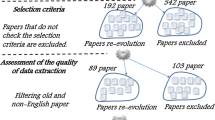Abstract
With the fast development of cloud computing and wide application of cloud storage, the energy efficiency of cloud storage system is drawing significant attention from researchers or specialists. For the typical Dynamo cloud storage system, we design a new policy instead of the consistent hashing policy which is a combination of consistent hashing and sequential policy. The basic idea of this policy is that it divides the nodes into groups and allows each other to be mirror modes so it can find the full coverage subset of data items easily. Also we use autoregressive-moving-average model to estimate the task numbers of servers so that when under low utilization period, certain numbers of servers can be turned off to save energy. Based on the model, we demonstrate that it can save up to 23.7 % energy and maintain load balancing of servers. Furthermore, we compare our policy with Heuristic which is a classical energy conservation policy for cloud storage system that is based on consistent hash table. And we find several advantages of our policy which include finding the minimum subset of full coverage as well as other aspects.











Similar content being viewed by others
References
Hamilton J (2009) Cooperative expendable micro-slice servers (CEMS): low cost, low power servers for internet-scale services. In: Proceedings of 4th Biennial conference on innovative data systems research (CIDR), Asilomar
U.S. Environmental Protection Agency (2007) EPA report on server and data center energy efficiency. http://www.energystar.gov/index.cfm?c=prod_development_efficiency_study
Battles B, Belleville C, Grabau S, Maurier J (2007) Reducing data center power consumption through efficient storage. Research Report, NetApp. http://www.it-executive.nl/images/downloads/reducing-datacenter-power.pdf
Ghemawat S, Gobioff H, Leung ST (2003) The Google file system. In: ACM SIGOPS operating systems review, vol 37, no. 5. ACM Press, New York, pp 29–43
Borthakur D (2007) The hadoop distributed file system: architecture and design. Hadoop Project Website, vol 11, p 21
DeCandia G, Hastorun D, Jampani M, Kakulapati G, Lakshman A, Pilchin A, Vogels W (2007) Dynamo: amazon’s highly available key-value store. In: ACM symposium on operating systems principles: proceedings of twenty-first ACM SIGOPS symposium on operating systems principles, vol 14, no. 17, pp 205–220
Lakshman A, Malik P (2010) Cassandra: a decentralized structured storage system. ACM SIGOPS Oper Syst Rev 44(2):35–40
Barroso LA, Holzle U (2007) The case for energy-proportional computing. Computer 40(12):33–37
Fan X, Weber WD, Barroso LA (2007) Power provisioning for a warehouse-sized computer. ACM SIGARCH Comput Archit News 35(2):13–23
Lefurgy C, Wang X, Ware M (2007) Server-level power control. In: ICAC’07. Fourth international conference on Autonomic computing. IEEE Press, New York, pp 4–4
Bohrer P, Elnozahy E, Keller T, Kistler M, Lefurgy C, McDowell C, Rajamony R (2002) The case for power management in web servers. Power Aware Comput 78758
Lang W, Patel JM (2010) Energy management for MapReduce clusters. In: Proceedings of the VLDB endowment, vol 3, no. 1–2, pp 129–139
Leverich J, Kozyrakis C (2010) On the energy (in) efficiency of hadoop clusters. ACM SIGOPS Oper Syst Rev 44(1):61–65
Maheshwari N, Nanduri R, Varma V (2012) Dynamic energy efficient data placement and cluster reconfiguration algorithm for MapReduce framework. Future Gener Comput Syst 28(1):119–127
U.S. Environmental Protection Agency (2007) EPA report on server and data center energy efficiency. http://www.energystar.gov/index.cfm?c=prod_development.server_efficiency_study
Gurumurthi S, Sivasubramaniam A, Kandemir M, Franke H (2003) Reducing disk power consumption in servers with DRPM. Computer 36(12):59–66
Lang W, Patel JM, Naughton JF (2010) On energy management load balancing and replication. ACM SIGMOD Record 38(4):35–42
Thereska E, Donnelly A, Narayanan D (2011) Sierra: practical power-proportionality for data center storage. In: Proceedings of the sixth conference on Computer systems. ACM Press, New York, pp 169–182
Meisner D, Gold BT, Wenisch TF (2009) PowerNap: eliminating server idle power. In: ACM sigplan notices, vol 44, no. 3. ACM Press, New York, pp 205–216
Carrera EV, Pinheiro E, Bianchini R (2003) Conserving disk energy in network servers. In: Proceedings of the 17th annual international conference on supercomputing. ACM Press, New York, pp 86–97
Chen Y, Keys L, Katz RH (2009) Towards energy efficient mapreduce. EECS Department, University of California, Berkeley, Technical Report UCB/EECS-2009-109
Harnik D, Naor D, Segall I (2009) Low power mode in cloud storage systems. In: IPDPS 2009. IEEE international symposium on parallel and distributed processing. IEEE Press, New York, pp 1–8
Karger D, Lehman E, Leighton T, Panigrahy R, Levine M, Lewin D (1997) Consistent hashing and random trees: Distributed caching protocols for relieving hot spots on the World Wide Web. In: Proceedings of the twenty-ninth annual ACM symposium on theory of computing. ACM Press, New York, pp 654–663
The Baidu Statistical Institutes of traffic (2013) Report on percentage of time consumption, Baidu. http://tongji.baidu.com/data/hour
Lin M, Wierman A, Andrew LL, Thereska E (2011) Dynamic right-sizing for power-proportional data centers. In: INFOCOM, Proceedings IEEE. IEEE Press, New York, pp 1098–1106
Acknowledgments
This work was supported by a Grant from the National Natural Science Foundation (Nos. 60970038, 61272148) and Specialized Research Fund for the Doctoral Program of Higher Education (20120162110061, 20120162120091). Also, the authors greatly appreciate the reviewers’ valuable comments on this paper.
Author information
Authors and Affiliations
Corresponding author
Rights and permissions
About this article
Cite this article
Yu, J., Hu, Z., Xiong, N.N. et al. An energy conservation replica placement strategy for Dynamo. J Supercomput 69, 1068–1086 (2014). https://doi.org/10.1007/s11227-014-1219-5
Published:
Issue Date:
DOI: https://doi.org/10.1007/s11227-014-1219-5




